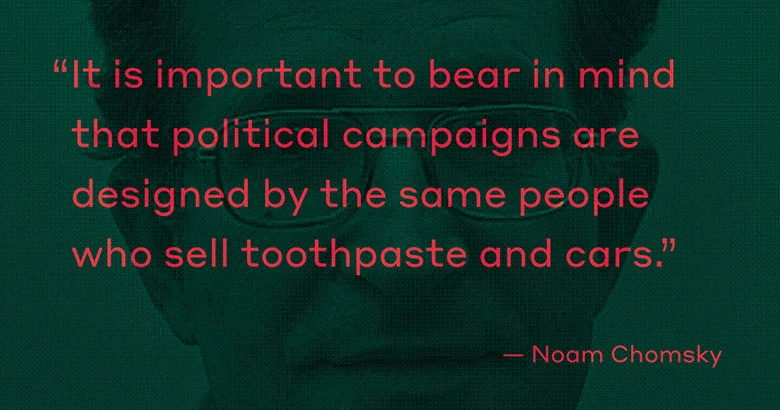Editorial: The truth, the post-truth and nothing but the truth

It’s no surprise that “fake news” was Collins Dictionary’s 2017 Word of the Year. Less expected? The role marketing technologies have played in its rise.
Anyone who works in marketing and advertising knows that, rather than tangible attributes such as price, flavour or speed, intangible brand attributes are the most emotionally sticky. These are the attributes that form facets of a customer’s sense of identity: for example, a person identifies as a Volkswagen driver, a Leafs fan, an Apple user.
In many cases, these attributes can take on an exaggerated importance, inspiring an emotional loyalty that flies in the face of rational thinking—or allows the loyal customer to rationalize their own thinking as being purely objective—leading Volkswagen to become the world’s biggest car company only a year after its international emissions scandal, making the Leafs the third-most valuable franchise in the NHL in spite of holding the league’s longest Stanley Cup drought (48 seasons!), and keeping Apple in its spot as the world’s biggest tech company regardless of all of the so-called “better” features its competitors offer (and I’m perfectly objective about my choice of an iPhone over an Android, because, well …).
Up until last year, these exaggerations were, for the most part, a (relatively) harmless pursuit—there’d be no net benefit or loss to society if a person chose a Toyota over a Honda, Coke over Pepsi, Crest over Colgate.
But after 2016—the year of Brexit and the election of Donald Trump as US president—we witnessed emotional loyalty flying in the face of factual evidence more flagrantly than a marketer could ever have imagined (or wished) possible.
In light of these political events—which are, admittedly, only shocking in their extreme nature; after all, fibbing, if not outright lying, is considered the hallmark of most politicians—Oxford Dictionaries named “post-truth” the 2016 word of the year, defined as “relating to or denoting circumstances in which objective facts are less influential in shaping public opinion than appeals to emotion and personal belief.”

And it spans more than just these two high-profile events. The Economist notes that feelings, not facts, are being evoked to reinforce prejudices in other nations’ political scenes: “Members of Poland’s government assert that a previous president, who died in a plane crash, was assassinated by Russia. Turkish politicians claim the perpetrators of the recent bungled coup were acting on orders issued by the CIA.”
The Independent described 2016 as a point in time in which people inhabited “internet-created bubbles, where algorithms feed their prejudices and misconceptions with cosseting confirmations of whatever they have selected for their bespoke truth … axiomatically beyond the reach of fact.”
These “internet-created bubbles” are the sad outcome of some of the most exciting communications technologies marketers have ever had at our disposal: social media marketing, social listening, programmatic advertising, retargeting, predictive modelling, data mining, news algorithms and more.
It’s a disappointing twist. What promised to help us deliver relevant, appropriate and useful content and advertising—essentially to reach the right customers at the right time and stop wasting money on people who don’t need our clients’ products and services (and, in turn, to stop wasting those people’s time)—has also been co-opted by cynical political campaigns.
It’s a complete reversal of the axiom that, if a good thing comes along, marketers will figure out a way to make money from it. In this case, a good thing was just getting started (super-relevant marketing) when its dystopian extreme crashed, and ruined, the party.
Lots of lessons have quickly been learned. Late in 2016, a new fact-checking system was announced for Google News. Earlier this year, Facebook changed its news algorithm to give extra visibility to posts that don’t show signs of being sensationalist, clickbait-ish, out of date or otherwise inauthentic.
Other good news is that subscriptions to newspapers such as the New York Times, Wall Street Journal and Washington Post are all on the rise.
Not that any news source is ever without bias or the occasional sensationalistic headline, but people touting “fake news” as a way of shutting down debate need to remember that “traditional” journalists are ideally trained to challenge their assumptions to ensure as balanced a view as possible. While the Breitbarts and Rebels of the world may have snuck up on an oblivious majority, most signs—including the rejection of aggressive nativist Marine Le Pen in this year’s French election and the ultimately (and thankfully) anticlimactic result of the Canadian Conservative party leadership race, despite early concerns about Kellie Leitch, Kevin O’Leary and Maxime Bernier—indicate that fair-minded people are beginning to sit up and pay more attention.
Here’s to the pendulum swinging back, and quickly. A promising sign: the Global Language Monitor has just named “truth” the word of the year for 2017.